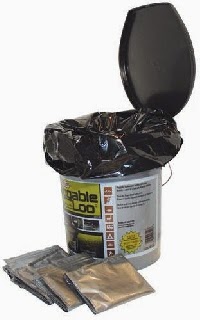Okay, so it's a silly, snowbound morning.
But I thought I would say a few words about what we've learned about dealing with snow aboard the vessel, especially about dealing with snow aboard a fabric roofed vessel.
Just in general, snow is pretty but a pain in the potoot. It renders the docks slippery and dangerous, and adds appreciable weight and stress to the vessel (and especially to the membrane that comprises the roof). The same would apply, thinking on it, to any soft-skinned structure, especially Bowtop Vardo wagons on which we based our roofline.
 |
| Yeah, it's pretty, but I'm ready for spring, folks. |
The membrane, a UV resistant vinyl, is really slippery. We've learned that if we keep it warm--that is to say keeping the loft heater or lanterns on--the ice and snow just slides off as it accumulates. The noise is sometimes startling when it cuts loose, but it keeps excess weight from building up on the membrane. If you do begin to get some buildup, a bit of gentle tapping on the underside of the membrane can usually make it slide off. (Just as an aside, I was just up on the docks fetching water and dumping trash, and despite several inches of snow on the pier, there is none on our roof).
We removed the screen from the sleeping loft window. As it overlooks our solar panels, we can open the window and use a broom to clear off our solar panels periodically without having to go out on the aft deck.
 |
| Keeping these guys clear of snow means you get to still have power, usually a plus. |
We drape the front door with a curtain made from acrylic blanket during winter, so that when we DO have to open the door, there is less of a heat loss as the curtain falls immediately back into place, closing the opening, even if the door is still open. We've found it effective, and it's certainly a cheap expedient.
Going into snow days, a bit of prior planning can make life a lot easier. Looking at the docks right now, one of the last things on my "want" lists is to have to get up and off the vessel and walk down the snowy, slippery docks, up a snow covered set of stairs, and up to the parking lot to the car. Yesterday was beautiful. Yesterday we bought enough groceries, wine, kerosene, chocolate, and other assorted supplies to last us through the anticipated snowy days, so that we wouldn't HAVE to go anywhere if we chose not to do so.
As a result of all the above, I'm sitting here in a nice, warm room after a nice lunch, listening to WTMD on the radio (hey, check those guys out on the web if you don't know em. Great station if you like new music), and waiting for my teakettle to boil. Very pleasant when you consider all of the Unpleasant things I could have to be doing if we hadn't thought ahead a bit. I mean, lets face it, "It's really pretty out, please hand me another brandy" beats the hell out of "OMG we're out of kerosene for the heater and I've got to go OUT in that to get some," now doesn't it?
Stay warm and dry and happy.
Mungo
PS check out our other blogs, Life, Art, Water and Onboard Cooking. Leave us some comments. We love hearing from you guys. Hi to all you folks from China and Taiwan that have been visiting us lately on the blog. Glad you stopped by. M















